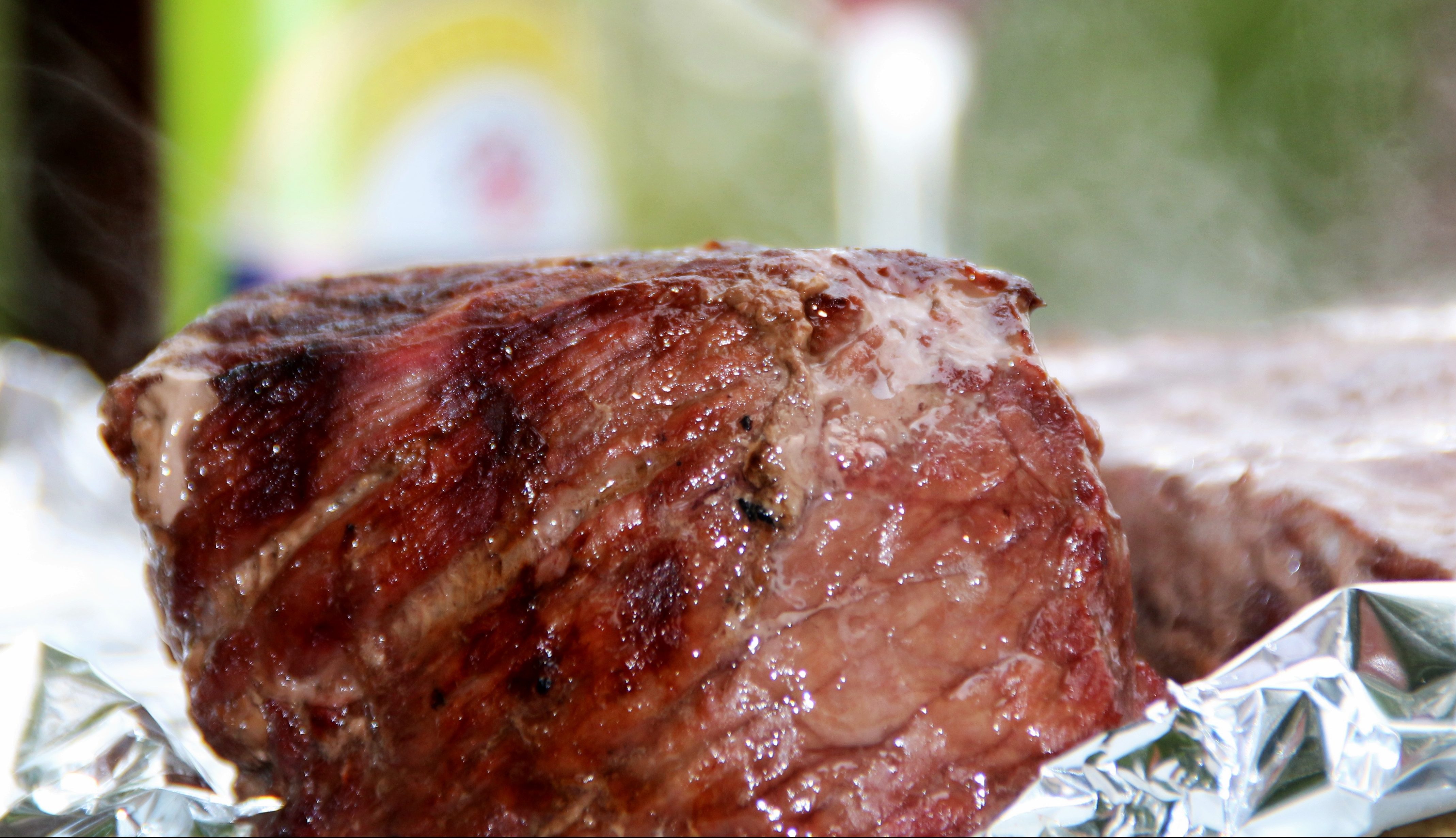Red Meat is a Superfood and Great for Weight Loss

Many have paid a dear price for their health by avoiding red meat.
Red meat is one of the healthiest foods on earth. I will even go so far as to say it is a superfood!
Red meat is medicine.
It’s one of the most nutritious foods you can eat, containing one of the most abundant dietary sources of B12, highly absorbable forms of iron and zinc, vitamin D, dozens of minerals, and many other essential nutrients.1
If you don’t eat it, you may likely join many in the population who are B12, vitamin D, and zinc deficient.
IRON
Red meat contains primarily heme iron, the form that is far more absorbable than the non-heme form of iron found in plant foods.2
Non-heme iron is found in spinach and tofu, but little is absorbed because the phytates in these foods bind to it and prevent its absorption.
Surprisingly, even small amounts of red meat can aid in the absorption of non-heme iron.
B VITAMINS
Red meat contains significant levels of B vitamins, including B12, thiamin, riboflavin, pantothenic acid, folate, niacin, and vitamin B6.
Eating red meat is one of the easiest ways to ensure adequate intake of your B vitamins.
Red meat is a rich source of vitamin B12, which is vital to the proper functioning of nearly every system in your body, especially your nervous system.
Tufts University reported that 39% of the population has a B12 deficiency low enough to cause neurological problems.3
You need your red meat!
ZINC
Red meat is an especially important source of zinc.
Many people are zinc deficient with an estimated global prevalence of zinc deficiency around 25%.5
Zinc is an essential mineral that is an imperative part of many functions in the body, including structure in many proteins and enzymes and regulation of gene expression.
Zinc, ironically, is used to repair damage in our arteries.
Without it, our arteries cannot be repaired properly, yet cardiovascular patients are told to avoid zinc-rich red meat.
FATS
Red meat gets straight A’s for its fatty acid profile.
Grass-fed meats contain approximately equal parts of saturated and monounsaturated fat, with only a small amount of polyunsaturated fat.2
Contrary to popular belief, you must eat saturated fats to be In fact, you must ensure that 50% of your dietary fats are saturated to be able to absorb the minerals from your food.6
The reason red meat is such a celebrated superfood in the ancestral movement is because it’s exploding with highly absorbable nutrients.
Too much of any food is bad for you and red meat, like any food, needs to be eaten in moderation and complemented with fresh veggies and fruit.
Go ahead and order that grass-fed filet mignon tonight!
Best,
Wendy Myers
Wendy Myers, CHHC, is the founder and head writer of Liveto110.com. She is a certified holistic health and nutrition coach in Los Angeles, Ca, having attended the Institute for Integrative Nutrition in New York and graduated with a degree in Entrepreneurship from the University of Southern California. She is also certified in Hair Mineral Analysis for the purpose of designing Mineral Power programs for clients to correct their metabolism and body chemistry. She is currently seeking her masters in clinical nutrition at Bridgeport University in Connecticut.
Look for Wendy Myers’s new book coming soon, The Modern Paleo Survival Guide. You can get a taste of her new book by downloading her free Modern Paleo Survival Guides. You can also download her free 35-page weight loss eBook called the Live to 110 by Weighing Less eGuide. Wendy hosts the weekly Live to 110 Video Podcast and the Modern Paleo Cooking show on her Live to 110 Youtube Channel.
REFERENCES
- Sharma S, Sheehy T, Kolonel LN. Contribution of meat to vitamin B (12), iron and zinc intakes in five ethnic groups in the USA: implications for developing food-based dietary guidelines. J Hum Nutr Diet. 2013 Apr; 26(2):156-68. http://www.ncbi.nlm.nih.gov/pubmed/23398393
- Wyness, L., E. Weichselbaum, A. O’Connor, E. B. Williams, B. Benelam, H. Riley, S. Stanner. Red meat in the diet: an update. Nutrition Bulletin. March 2011. Volume 36, Issue 1. Pages 34–77. http://onlinelibrary.wiley.com/doi/10.1111/j.1467-3010.2010.01871.x/abstract
- McBride, Judy. B12 Deficiency May Be More Widespread Than Thought. August 2, 2000.http://www.ars.usda.gov/is/pr/2000/000802.htm
- Watanabe F1, Katsura H, Takenaka S, Fujita T, Abe K, Tamura Y, Nakatsuka T, Nakano Y., “Pseudovitamin B(12) is the predominant cobamide of an algal health food, spirulina tablets.” J Agric Food Chem. 1999 Nov;47(11):4736-41. http://www.ncbi.nlm.nih.gov/pubmed/10552882
- Maret W, Sandstead HH (2006). “Zinc requirements and the risks and benefits of zinc supplementation”. J Trace Elem Med Biol 20 (1): 3–18. doi:10.1016/j.jtemb.2006.01.006. PMID 16632171.
- Colbin, Annamarie, PhD. The Whole-Food Guide to Strong Bones: A Holistic Approach. New Harbinger Publications, 2009. Oakland, Ca.